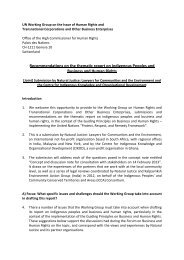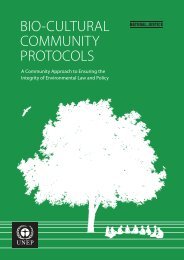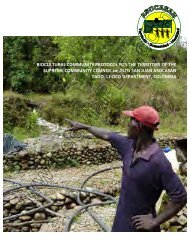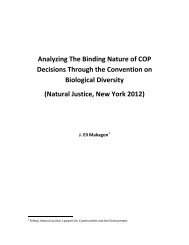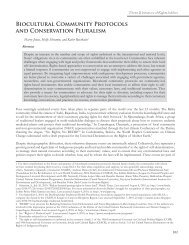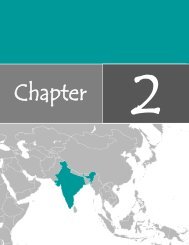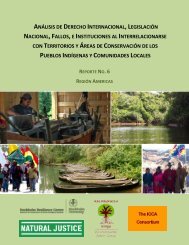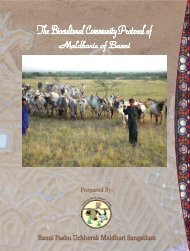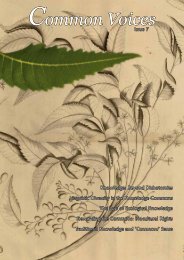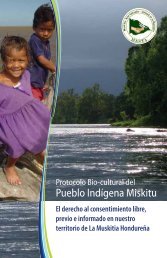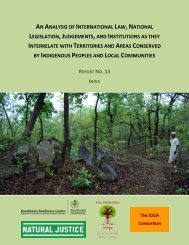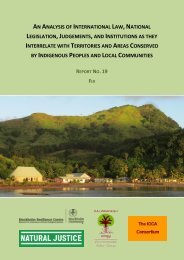English - Natural Justice
English - Natural Justice
English - Natural Justice
Create successful ePaper yourself
Turn your PDF publications into a flip-book with our unique Google optimized e-Paper software.
2. INCREASED RECOGNITION AND SUPPORT2.1 Legal RecognitionThe International Law and Jurisprudence Report illustrates the impressive extent ofprovisions in binding and non-binding international instruments that support, broadly put,the rights of Indigenous peoples and local communities over their territories, areas andresources. Notably, these rights are not limited to human rights instruments, but can befound across the full spectrum of international law and policy, including in the followingcategories: biodiversity and conservation, endangered species, agriculture, climate change,desertification, wetlands, cultural heritage and intellectual property, and sustainabledevelopment. It also details examples of judgements from regional and national courts thatsupport Indigenous peoples’ and local communities’ rights, including a growing body ofjurisprudence on aboriginal title. The research at the international level confirms the factthat Indigenous peoples and local communities are not merely stakeholders, but are rightsholderswho must be respected and recognized as the stewards of their territories, areasand natural resources.Similarly, at the national level, it is evident that there are a number of improvements in thisregard, four of which are set out here. First, stronger and well-organized Indigenous peoples’institutions, alliances and organizations are increasingly demanding and participating inrelevant policy-making and legislative processes. Second, an increasing number ofgovernment, development and environment agencies are applying human rights standardsin their engagements with Indigenous peoples and local communities, including byupholding substantive rights, respecting procedural rights such as to free, prior andinformed consent (FPIC), and recognizing traditional authorities and customary laws. Third,many countries are pursuing land restitution and reform programmes. These programmescan significantly contribute to Indigenous peoples’ and local communities’ rights over theirterritories and resources, provided these rights are fully taken into account and communitytenure is promoted.Positive DevelopmentsIndigenous Protected Areas (IPAs) emerged from the Australian Government’s 1992commitment to establish a system of protected areas that is comprehensive, adequate andrepresentative of all the terrestrial bioregions of Australia – the National Reserve System(NRS). IPAs are planned, voluntarily declared (or dedicated) as protected areas and managedby Indigenous peoples themselves. While IPAs are not government protected areas, the IPAProgram is an Australian Government initiative to support these activities and to formallyrecognize IPAs as part of the NRS. In recognition that many government protected areas hadalready been established on traditional estates without Indigenous peoples’ consent, the IPAprogram also includes funding to enable Indigenous peoples to negotiate enhancedengagement in the management of existing government-declared national parks and otherprotected areas.A major development in Kenya has been the new 2010 Constitution’s provisions for landreform, which are being further developed in a range of policy reforms and draft legislation.The constitution effectively replaces trust lands with a new land tenure category of‘community lands’, devolving trust lands – which comprise the majority of Kenya’s land area– from the district to the community level. If effectively implemented, this has the potentialto greatly strengthen the tenurial basis of ICCAs across Kenya, including both formally



